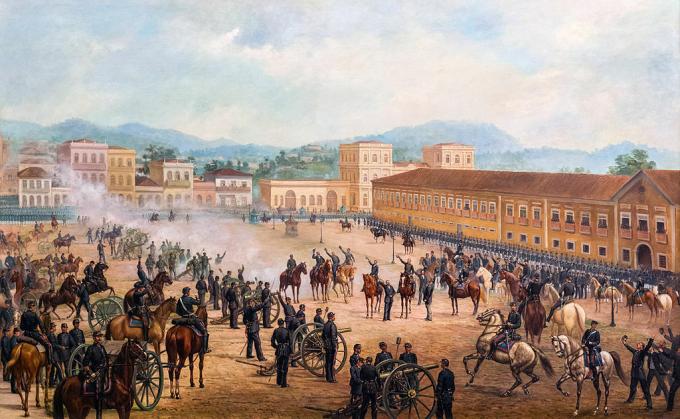It is considered a pharaoh those leaders who reigned in Egypt, after the unification of Lower and Upper Egypt performed by Menes. This king ruled from 3185 to 3125 BC. Ç.
the life of a Pharaoh it was marked by religious rituals, meetings with its advisors, reception of ambassadors, visits to works and plantations.
the first pharaohs

Power was passed from father to son, but court intrigues could interrupt the line of succession favoring relatives and even noble families.
As they led Egypt for over 3000 years, it is evident that their daily lives varied. The first kings even took a physical aptitude test every year to show that they could continue in office.
Although it is well known, the title “Pharaoh” was given by the Hebrews and later popularized by the Greeks. Only later was it adopted by the kings of Egypt.
Pharaoh's life
The life and government of a pharaoh were guided by religion. When they ascended to the throne, the first thing they did was to build tombs for themselves and their family.
The best known of these tombs are the pyramids that have come down to our days and are considered one of the 7 Wonders of the Ancient World.
education of pharaoh
The formation of the crown prince varied according to the times. Many pharaohs probably could not read or write, as this function was left to the scribes.
However, they learned the necessary rituals to worship each god, to perform the correct gestures in ceremonies and, mainly, the prayers to be said.
Also knowledge of astronomy and mathematics were taught to future sovereigns.
Routine of a Pharaoh
A common day in the life of a pharaoh included visits to temples and sacrifices to the gods, but also meetings of a governmental nature.
To start the journey, the pharaoh bathed and was massaged with ointments and perfumes that left him fragrant. Their garments were made of linen and their ornaments were generally of gold, precious or rare stones. All with the intention of highlighting its features and its power.
When leaving to visit some building or plantation, the pharaoh was followed by a crowd that tried to get closer to his sacred person. Carried in a litter, in order to be seen by the population, the pharaoh reinforced his power as an intermediary between the gods and human beings.
Only in the afternoon, the pharaoh could enjoy its palaces and stroll through its gardens. However, at sunset, a ceremony performed to thank the gods, required his presence again.
sacrifice to the gods

Considered as the incarnation of the god horus, or from another god of the Egyptian pantheon, a pharaoh was supposed to offer daily sacrifices to the gods in order to guarantee his people the blessings of the deities.
Abundant harvests, victory in wars, end of epidemics, full of Nilo river, all this was to be ensured through the worship performed by the pharaoh.
Coronation of a Pharaoh
A Pharaoh's coronation ceremony lasted about five days and was held in Memphis. This was the city that the first pharaoh, Menes, had been crowned, and thus his successors maintained the tradition.
Pharaoh was given the attributes of power such as the double crown that represented Lower and Upper Egypt, the crook and the scourge (a kind of whip). From then on, he was considered a deity on earth and made a sacrifice in honor of the god Ptah.
most important pharaohs
Thirty dynasties took turns on the throne in a period between 3100 BC. Ç. up to 332 a. Ç.
Thus, many Egyptian rulers stood out for their political or military capacity or because they left large buildings.
Below are some great kings of Ancient Egypt:
Menes (or Narmer)
He was the first leader to reign in Lower and Upper Egypt, between 3200 BC. Ç. and 3,000 a. Ç. He founded the city of Memphis, began the cult of various gods and knew how to govern with skill so as not to upset the two regions of his territory.
Tutankhamen
He reigned from 1333 BC Ç. and 1,323 a. Ç. He restored the polytheism abolished by his father and Thebes as the capital of Egypt. His figure is not so remembered for his years in government, but rather because of the fabulous find of his tomb in 1922, which brought a new perspective to Egyptology.
Ramses II
He ruled 66 years from 1279 to 1213 a. Ç. One of his wives, Nefertari, played a major political role during his long reign. A great builder, he established a new capital called Pi-Ramses. However, he had to let the Hebrews go before the plagues that ravaged Egypt.
Cleopatra
Although the succession was made only by male descendants, some women sat on the Egyptian throne as regents or sovereigns. One of them was Cleopatra VII, who reigned from 51 BC. Ç. up to 30 yr. a., and guaranteed a privileged position for Egypt within the Roman Empire.
There are more texts on this topic for you:- Egyptian art
- Sphinx of Giza
- The seven wonders of the ancient world
- Theocracy


